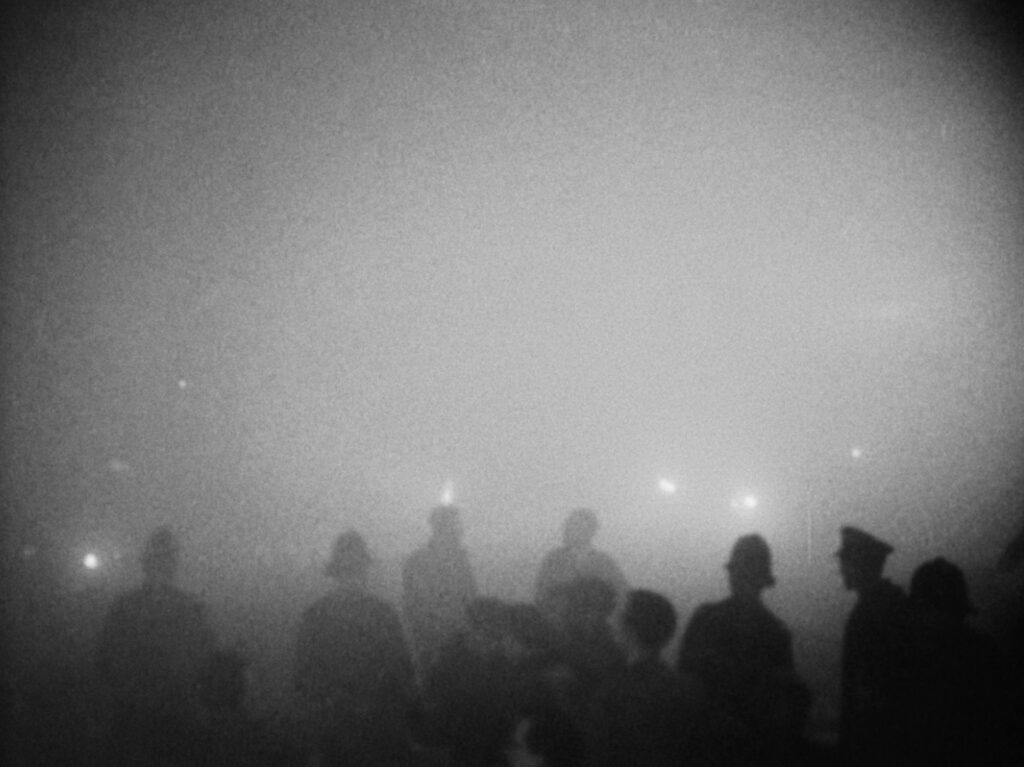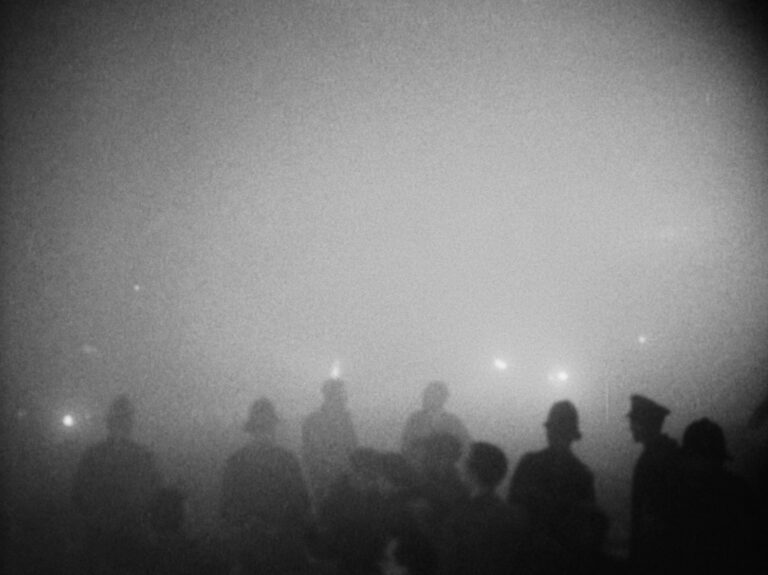Below are a few questions posed to Natalie Cubides-Brady about her competition film The veiled city.
What kind of work did you do on the archive materials for your film?
The film grew out of seeing some photographs of London during the Great Smog of 1952. I was struck by the way in which the smog had a beguiling effect, turning the city into a site of both dream-like magic and foreboding death.
I was interested in working with the archive material in a way that allowed me to re-appropriate the footage whilst not completely separating it from its original context.
Loosely, I was also interested in the notion of ‘fabulation’ – challenging the narrative that is recorded in official history. The smog was an early example of a large-scale environmental disaster caused entirely by humans. One of the first warning signs that we were entering the Anthropocene. In 1952, the British government understood that the smog was tied to industrialisation but they down-played the link, and they also under-reported the number of excess deaths caused by the smog. I think it’s interesting to reappraise the footage through the lens of the Anthropocene because it introduces an existential timescale to the material.
I approached the edit with an overall story arc in mind, but the actual script emerged from working with the archive material itself – we cut a first assembly guided by visual storytelling and music, and I wrote the script in response to this first cut. I wanted the voice-over to emerge from the images rather than using the images to illustrate a script.
The film is somewhere between sci-fi and a city symphony, and in both cases the theme of memory is crucial. Would you tell us about how you think the past can influence the future?
I’m fascinated by the slippages between the past, the present, and the future, and the way in which memory exists almost outside of time. Of course, this is also tied to the question of film itself, as a technology and medium.
When I started looking at the archival material of the smog I felt that the images could be from a future disaster, and that set up temporal tension that lent itself to sci-fi. But at the same time, I wanted to consider the ways in which the past and future both influence each other. So this collapsing of temporalities, thinking of the past as future and the future as past, was one of the starting points of the film. I suppose that makes the present a kind of suspension between the two.
This links with an enduring interest I have in psychogeography; how the traces of the past constitute the present and the future, and how our experience of place and landscape is always temporal, always subjective.
Would you suggest to young people and to a new audience a few titles of found footage and/or experimental films that have been pivotal for your education and training?
Rain (1929), La Jetee (1962), Sans Soleil (1983), The Beaches of Agnès (2008), Nostalgia for the Light (2010), Love is the Message, The Message is Death (2016) O.J.: Made in America (2016), El Mar, La Mar (2017)

